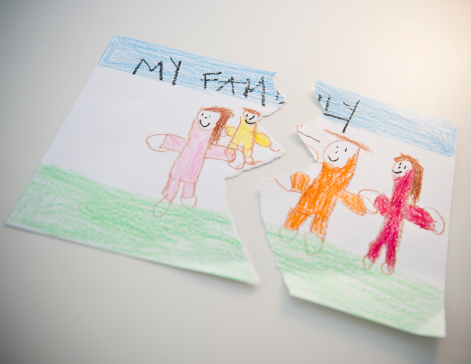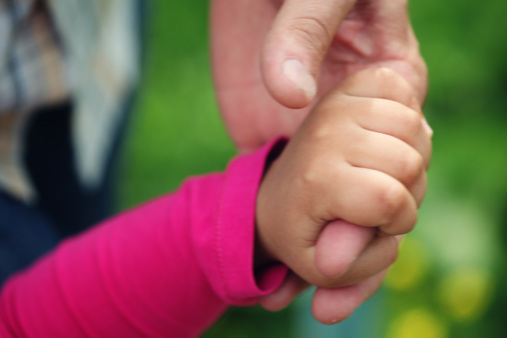 Married, separated, or divorced alike, it’s hard not to feel anxious about the upcoming holiday season. Whether you love it or are dreading it, the 2015 holiday season is just around the corner. Maybe you are feeling that there is no way you are going to get through this year with your emotions in check. You are not alone. Whether you are feeling anger, sadness, grief, frustration, anxiety, etc. it is important to feel balance this time of year. How do you do that, especially if you are still grieving from your divorce?
We can’t (and shouldn’t) try to banish these emotions. However, we can be intentional and generate positive emotions to help redistribute the weight of these negative emotions. So how can you do that even if you are feeling completely down this time of year? We’ve blogged previously about ways of helping others and paying it forward as ways to help ourselves emotionally, and ‘tis the season of a vast array of opportunities to help others, but here are some additional ideas for creating positive emotions in your world:
Finding Nature: Nature has an amazing way of soothing us without words. Sit down and make a list of places nearby to visit nature. Maybe some are as easy as stepping out your front door and others maybe involve a little bit of a drive. Even that drive to get their can prove to be therapeutic. Nature heals and being in nature, or even viewing scenes of nature, has been shown to reduces anger, fear, and stress.
Exercise: It’s no secret that exercise can help to balance your emotions – whether it’s running, walking, yoga, or even a team sport, find what you love and carve time out of your schedule to do it! When you exercise, the body releases endorphins that minimize the sensation of pain. These endorphins elevate your mood and reduce feelings of anxiety. You will also feel better when you exercise and because you are healthier, you will have more energy, and feel more balanced.
Distractions: Distractions can be a positive solution for balancing emotions. Although you might be thinking that distractions will just bury your feelings to come out later on, healthy distractions provide positive emotions that will help you to release some of the negative feelings. Make a list of both healthy and unhealthy distractions that you tend to gravitate towards. While an unhealthy distraction like having drinks with friends seems like a good idea in the moment, a healthy distraction like Saturday morning coffee with a friend will prove to be better for your emotions.
Focus on the Positive: Right now you might be thinking, “what positive?” At Daisy Camp we love the quote, “There is always, ALWAYS, something to be thankful for.” Maybe you’ve found journaling a helpful process for you through your divorce, which is great, but if you read through it, it may bring on raw and deep negative emotions, so start a separate gratitude journal. Make lists of what you are thankful for (past, present, and future), and try to add to that list daily. When you are feeling down – read that journal.
Wishing you strength and positivity as you balance your emotions this holiday season. Remember that, “Nothing can dim the light that shines from within.” Maya Angelou. You will make it through this.
Married, separated, or divorced alike, it’s hard not to feel anxious about the upcoming holiday season. Whether you love it or are dreading it, the 2015 holiday season is just around the corner. Maybe you are feeling that there is no way you are going to get through this year with your emotions in check. You are not alone. Whether you are feeling anger, sadness, grief, frustration, anxiety, etc. it is important to feel balance this time of year. How do you do that, especially if you are still grieving from your divorce?
We can’t (and shouldn’t) try to banish these emotions. However, we can be intentional and generate positive emotions to help redistribute the weight of these negative emotions. So how can you do that even if you are feeling completely down this time of year? We’ve blogged previously about ways of helping others and paying it forward as ways to help ourselves emotionally, and ‘tis the season of a vast array of opportunities to help others, but here are some additional ideas for creating positive emotions in your world:
Finding Nature: Nature has an amazing way of soothing us without words. Sit down and make a list of places nearby to visit nature. Maybe some are as easy as stepping out your front door and others maybe involve a little bit of a drive. Even that drive to get their can prove to be therapeutic. Nature heals and being in nature, or even viewing scenes of nature, has been shown to reduces anger, fear, and stress.
Exercise: It’s no secret that exercise can help to balance your emotions – whether it’s running, walking, yoga, or even a team sport, find what you love and carve time out of your schedule to do it! When you exercise, the body releases endorphins that minimize the sensation of pain. These endorphins elevate your mood and reduce feelings of anxiety. You will also feel better when you exercise and because you are healthier, you will have more energy, and feel more balanced.
Distractions: Distractions can be a positive solution for balancing emotions. Although you might be thinking that distractions will just bury your feelings to come out later on, healthy distractions provide positive emotions that will help you to release some of the negative feelings. Make a list of both healthy and unhealthy distractions that you tend to gravitate towards. While an unhealthy distraction like having drinks with friends seems like a good idea in the moment, a healthy distraction like Saturday morning coffee with a friend will prove to be better for your emotions.
Focus on the Positive: Right now you might be thinking, “what positive?” At Daisy Camp we love the quote, “There is always, ALWAYS, something to be thankful for.” Maybe you’ve found journaling a helpful process for you through your divorce, which is great, but if you read through it, it may bring on raw and deep negative emotions, so start a separate gratitude journal. Make lists of what you are thankful for (past, present, and future), and try to add to that list daily. When you are feeling down – read that journal.
Wishing you strength and positivity as you balance your emotions this holiday season. Remember that, “Nothing can dim the light that shines from within.” Maya Angelou. You will make it through this.  Married, separated, or divorced alike, it’s hard not to feel anxious about the upcoming holiday season. Whether you love it or are dreading it, the 2015 holiday season is just around the corner. Maybe you are feeling that there is no way you are going to get through this year with your emotions in check. You are not alone. Whether you are feeling anger, sadness, grief, frustration, anxiety, etc. it is important to feel balance this time of year. How do you do that, especially if you are still grieving from your divorce?
We can’t (and shouldn’t) try to banish these emotions. However, we can be intentional and generate positive emotions to help redistribute the weight of these negative emotions. So how can you do that even if you are feeling completely down this time of year? We’ve blogged previously about ways of helping others and paying it forward as ways to help ourselves emotionally, and ‘tis the season of a vast array of opportunities to help others, but here are some additional ideas for creating positive emotions in your world:
Finding Nature: Nature has an amazing way of soothing us without words. Sit down and make a list of places nearby to visit nature. Maybe some are as easy as stepping out your front door and others maybe involve a little bit of a drive. Even that drive to get their can prove to be therapeutic. Nature heals and being in nature, or even viewing scenes of nature, has been shown to reduces anger, fear, and stress.
Exercise: It’s no secret that exercise can help to balance your emotions – whether it’s running, walking, yoga, or even a team sport, find what you love and carve time out of your schedule to do it! When you exercise, the body releases endorphins that minimize the sensation of pain. These endorphins elevate your mood and reduce feelings of anxiety. You will also feel better when you exercise and because you are healthier, you will have more energy, and feel more balanced.
Distractions: Distractions can be a positive solution for balancing emotions. Although you might be thinking that distractions will just bury your feelings to come out later on, healthy distractions provide positive emotions that will help you to release some of the negative feelings. Make a list of both healthy and unhealthy distractions that you tend to gravitate towards. While an unhealthy distraction like having drinks with friends seems like a good idea in the moment, a healthy distraction like Saturday morning coffee with a friend will prove to be better for your emotions.
Focus on the Positive: Right now you might be thinking, “what positive?” At Daisy Camp we love the quote, “There is always, ALWAYS, something to be thankful for.” Maybe you’ve found journaling a helpful process for you through your divorce, which is great, but if you read through it, it may bring on raw and deep negative emotions, so start a separate gratitude journal. Make lists of what you are thankful for (past, present, and future), and try to add to that list daily. When you are feeling down – read that journal.
Wishing you strength and positivity as you balance your emotions this holiday season. Remember that, “Nothing can dim the light that shines from within.” Maya Angelou. You will make it through this.
Married, separated, or divorced alike, it’s hard not to feel anxious about the upcoming holiday season. Whether you love it or are dreading it, the 2015 holiday season is just around the corner. Maybe you are feeling that there is no way you are going to get through this year with your emotions in check. You are not alone. Whether you are feeling anger, sadness, grief, frustration, anxiety, etc. it is important to feel balance this time of year. How do you do that, especially if you are still grieving from your divorce?
We can’t (and shouldn’t) try to banish these emotions. However, we can be intentional and generate positive emotions to help redistribute the weight of these negative emotions. So how can you do that even if you are feeling completely down this time of year? We’ve blogged previously about ways of helping others and paying it forward as ways to help ourselves emotionally, and ‘tis the season of a vast array of opportunities to help others, but here are some additional ideas for creating positive emotions in your world:
Finding Nature: Nature has an amazing way of soothing us without words. Sit down and make a list of places nearby to visit nature. Maybe some are as easy as stepping out your front door and others maybe involve a little bit of a drive. Even that drive to get their can prove to be therapeutic. Nature heals and being in nature, or even viewing scenes of nature, has been shown to reduces anger, fear, and stress.
Exercise: It’s no secret that exercise can help to balance your emotions – whether it’s running, walking, yoga, or even a team sport, find what you love and carve time out of your schedule to do it! When you exercise, the body releases endorphins that minimize the sensation of pain. These endorphins elevate your mood and reduce feelings of anxiety. You will also feel better when you exercise and because you are healthier, you will have more energy, and feel more balanced.
Distractions: Distractions can be a positive solution for balancing emotions. Although you might be thinking that distractions will just bury your feelings to come out later on, healthy distractions provide positive emotions that will help you to release some of the negative feelings. Make a list of both healthy and unhealthy distractions that you tend to gravitate towards. While an unhealthy distraction like having drinks with friends seems like a good idea in the moment, a healthy distraction like Saturday morning coffee with a friend will prove to be better for your emotions.
Focus on the Positive: Right now you might be thinking, “what positive?” At Daisy Camp we love the quote, “There is always, ALWAYS, something to be thankful for.” Maybe you’ve found journaling a helpful process for you through your divorce, which is great, but if you read through it, it may bring on raw and deep negative emotions, so start a separate gratitude journal. Make lists of what you are thankful for (past, present, and future), and try to add to that list daily. When you are feeling down – read that journal.
Wishing you strength and positivity as you balance your emotions this holiday season. Remember that, “Nothing can dim the light that shines from within.” Maya Angelou. You will make it through this. 


 A strategy used by some divorcing spouses and their attorneys is to threaten that they will take the other spouse to court. Threatening court is a negotiation strategy in an effort to get the other side to give up or significantly compromise their position(s).
When attorneys use this tactic, they often will prepare for a trial. The trial preparation ends up being extremely expensive and emotionally exhausting for the involved spouses. Often a hatred for the other spouse develops because of trials and/or the threatened use of court.
The reality is a small fraction of divorces end up in trial. The overwhelming reason those cases do end up in trial is because spouses and their attorneys refuse to negotiate. Sometimes a spouse will tell their attorney to go for the throat or they say I want to make him/her pay. It is the divorcing spouses and unfortunately their children, if any, that end up paying the price financially and emotionally. Seeking revenge does not have a place in any divorce process and accompanied by an unwillingness to negotiate in good faith sets up a strategy to fail.
A strategy used by some divorcing spouses and their attorneys is to threaten that they will take the other spouse to court. Threatening court is a negotiation strategy in an effort to get the other side to give up or significantly compromise their position(s).
When attorneys use this tactic, they often will prepare for a trial. The trial preparation ends up being extremely expensive and emotionally exhausting for the involved spouses. Often a hatred for the other spouse develops because of trials and/or the threatened use of court.
The reality is a small fraction of divorces end up in trial. The overwhelming reason those cases do end up in trial is because spouses and their attorneys refuse to negotiate. Sometimes a spouse will tell their attorney to go for the throat or they say I want to make him/her pay. It is the divorcing spouses and unfortunately their children, if any, that end up paying the price financially and emotionally. Seeking revenge does not have a place in any divorce process and accompanied by an unwillingness to negotiate in good faith sets up a strategy to fail.
 Co-parenting can be challenging even in the most amicable divorces, but there are some personalities disorders that make co-parenting downright difficult. Among these include, but are not limited to: bipolar disorder, borderline personality disorder, and narcissistic personality disorder. We are going to focus on narcissists in this post. Narcissists have a magnified sense of self-importance and lack they empathy for others. Narcissists insist on getting their way regardless of how it may affect others, even their own children. They may make promises to the children in order to gain compliance from the child, then refuse to honor the promises. They can be arrogant, self-centered, manipulative, demanding, and vain. As co-parents, these individuals often feel superior to their former spouse. It is challenging to reason with a narcissist, or attempt to try to get them to see the situation from someone else’s point of view, which makes co-parenting together a great feat.
Sound familiar? Most importantly you must know that your ex’s personality disorder does not need to define your divorce. One of the best things that you can do in this situation is file a parenting plan with the courts. A parenting plan will outline anything from daily routines to holiday schedules. When dealing with a narcissist the more information you have laid out in writing, the more black and white it becomes. A parenting plan with help to maintain firm boundaries with your ex.
When co-parenting with a narcissist you may need to keep your expectations low. You cannot expect the narcissist to tackle parenting with the same parental instincts that you have. What seems like second nature to you, may never cross a narcissist’s radar. Because a narcissist places no value on their children’s feelings, there will likely be emotional messes to clean up. Get your children (and you) into therapy and make it a regular and “normal” part of their lives.
Take comfort in knowing that you are not alone. There are support groups out there, both online and in person, that are aimed specifically towards coping with a narcissistic ex. Divorce is never easy on children. Coping with a narcissistic parent makes a stressful situation even more difficult, but not impossible. Educate yourself on co-parenting through these challenging times, and also commit to self-care to provide some reprieve.
Co-parenting can be challenging even in the most amicable divorces, but there are some personalities disorders that make co-parenting downright difficult. Among these include, but are not limited to: bipolar disorder, borderline personality disorder, and narcissistic personality disorder. We are going to focus on narcissists in this post. Narcissists have a magnified sense of self-importance and lack they empathy for others. Narcissists insist on getting their way regardless of how it may affect others, even their own children. They may make promises to the children in order to gain compliance from the child, then refuse to honor the promises. They can be arrogant, self-centered, manipulative, demanding, and vain. As co-parents, these individuals often feel superior to their former spouse. It is challenging to reason with a narcissist, or attempt to try to get them to see the situation from someone else’s point of view, which makes co-parenting together a great feat.
Sound familiar? Most importantly you must know that your ex’s personality disorder does not need to define your divorce. One of the best things that you can do in this situation is file a parenting plan with the courts. A parenting plan will outline anything from daily routines to holiday schedules. When dealing with a narcissist the more information you have laid out in writing, the more black and white it becomes. A parenting plan with help to maintain firm boundaries with your ex.
When co-parenting with a narcissist you may need to keep your expectations low. You cannot expect the narcissist to tackle parenting with the same parental instincts that you have. What seems like second nature to you, may never cross a narcissist’s radar. Because a narcissist places no value on their children’s feelings, there will likely be emotional messes to clean up. Get your children (and you) into therapy and make it a regular and “normal” part of their lives.
Take comfort in knowing that you are not alone. There are support groups out there, both online and in person, that are aimed specifically towards coping with a narcissistic ex. Divorce is never easy on children. Coping with a narcissistic parent makes a stressful situation even more difficult, but not impossible. Educate yourself on co-parenting through these challenging times, and also commit to self-care to provide some reprieve. 


